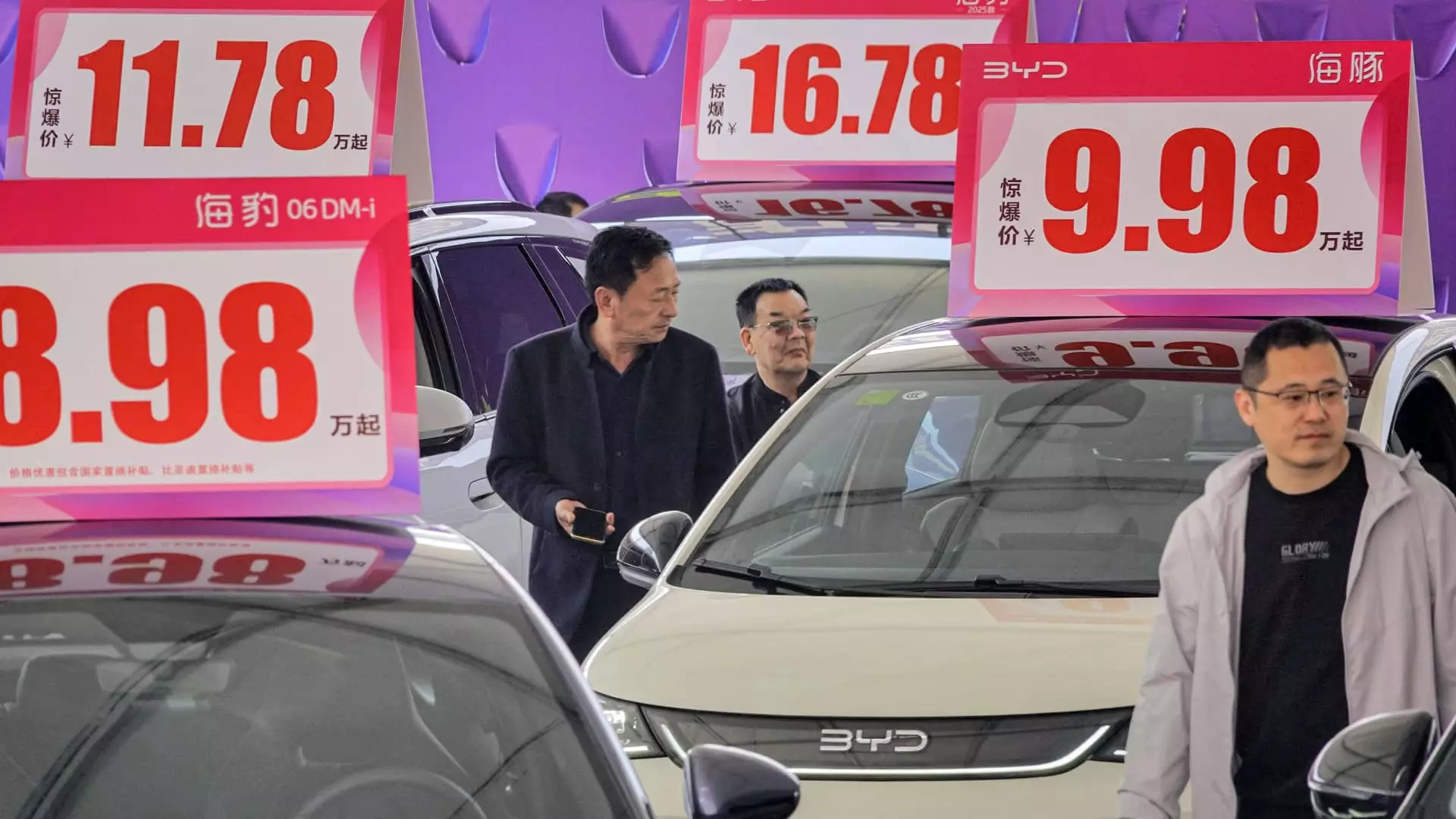In a startling move, BYD, one of China’s largest electric vehicle manufacturers, recently slashed prices on many of its models, leaving the automotive sector in a state of turmoil. Price reductions of as much as 30% for several entry-level battery-operated and hybrid vehicles are not merely a corporate strategy; they signify a potentially destabilizing shift in China’s electric vehicle landscape. As the new Seagull compact car now sits at an astonishingly low price of just 55,800 yuan ($7,750), it raises significant concerns about the overall health of the industry, especially for smaller companies scrambling to maintain competitiveness in an increasingly cutthroat environment. The dramatic fluctuation in prices does not only impact market dynamics but may also ignite deeper economic implications, heralding a potential recession in one of the few sectors that previously appeared resilient.
The Ripple Effect on Market Competitors
The uncertainty seeded by BYD’s aggressive pricing strategy has rippled through the market. Zhong Shi, an analyst from the China Automobile Dealers Association, characterizes the industry’s response as “nervous,” suggesting a collective shock that leaves smaller automakers apprehensive about their future. This fierce price competition emerges against the backdrop of a broader slowdown in China’s economy, where consumer demand remains tepid. Traditional automotive players are bracing for increased pressure to adapt quickly or risk obsolescence. The once-thriving market, buoyed by government subsidies intended to promote new energy vehicles, now faces the stark reality that many automakers may not survive this brutal race to the bottom.
As BYD and its contemporaries dive deeper into price wars, the consequences extend beyond corporate balance sheets. Consumers may benefit in the short term with lower prices, but the long-term ramifications could include diminished innovation and quality as manufacturers are forced to operate on razor-thin margins. Without robust competition grounded in technological advancement, the future of electric mobility could stagnate.
Deflationary Pressure and Economic Implications
Morgan Stanley’s Chief China Economist, Robin Xing, paints a worrisome picture where lowered vehicle prices amidst a supply-demand imbalance may contribute to broader deflationary pressures in the economy. This deflation could cannibalize spending in other sectors as consumers become accustomed to fluctuating car prices and may hold back on significant purchases, eroding the expected economic recovery. Compounding this issue, many industry experts point to a serious risk of reallocating resources from automotive innovation to survival strategies, further stunting progress in the EV sector.
Adding weight to this argument, it’s important to consider that the fast-growing EV sector could mirror the problematic growth patterns seen in China’s real estate market, as noted by Great Wall Motors Chairman Wei Jianjun. He draws an uncomfortable parallel to the Evergrande crisis, highlighting just how precarious the situation could become if unchecked. What happens when quality takes a back seat to affordability? Could we witness a layering of bad debts reminiscent of past economic crises?
Global Implications: A Threat to International Markets
The ramifications of China’s price wars are not constrained to the domestic market; global competitors are feeling the heat as well. With electric vehicles from Chinese manufacturers making strides in European and U.S. markets, tariffs and import duties are just slaps on the wrist at this point. Surprisingly, despite stiff penalties, BYD has managed to exceed Tesla’s sales in Europe for the first time, prompting concerns that an influx of cheaper vehicles could destabilize foreign auto industries.
Industry leaders in Europe and the United States are watching closely as they grapple with the still-misguided belief that imposing tariffs could effectively shield their markets from cut-throat competition. The question that looms large is whether these protective measures could be counterproductive, inadvertently stalling technological growth and innovation while entrenching large sectors of the economy in inefficiency.
Innovation or Cost-Cutting? The Divergence of Strategies
Interestingly, the pricing war has initiated a broader conversation about consumer value versus feature-rich offerings. Instead of merely competing on price, some companies, such as Geely-backed Zeekr, have opted to provide advanced driver-assist systems at no additional cost to customers, fostering loyalty and potentially boosting long-term sales. As we witness price wars overtake the discussion on product quality, it becomes evident that manufacturers willing to enhance their offerings could carve out a more sustainable path forward amidst turbulent market waters.
Despite BYD’s massive headlines and apparent success, their aggressive approach raises an essential question: Is longevity attainable in a market driven primarily by short-term gains? History teaches us that unsustainable practices often lead to a harsh reckoning, with consumers and competitors alike left hurriedly picking up the pieces. While the electric vehicle revolution has incredible potential to change our mobility landscape, navigating these emerging trends effectively is more crucial than ever.

